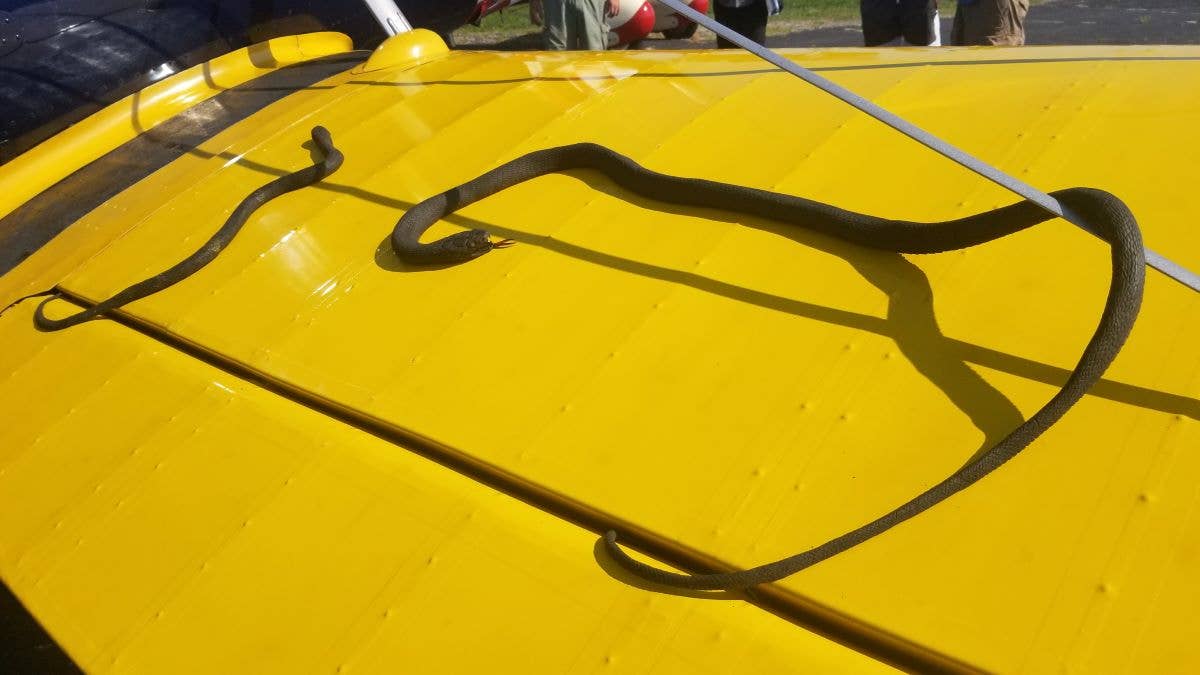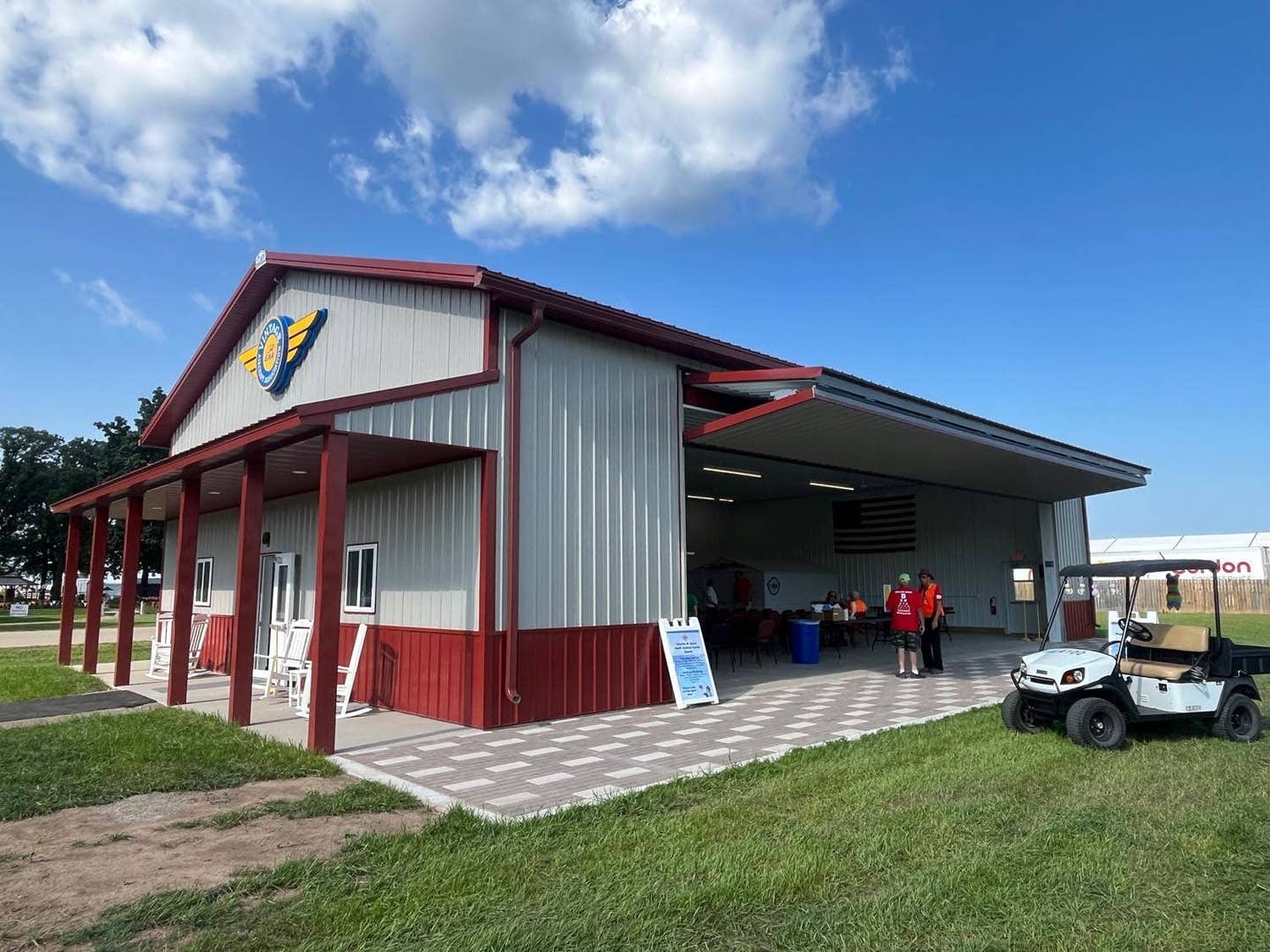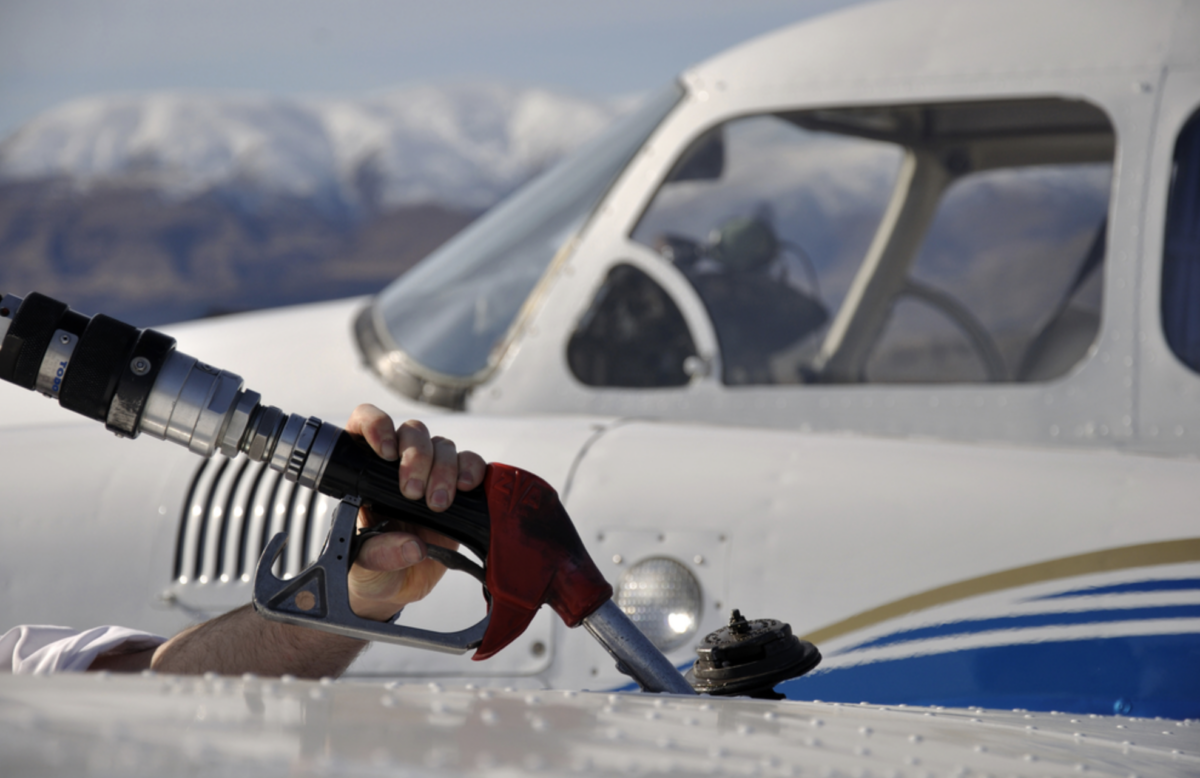Fake Snakes: Protecting Your Airplane from the Public
Synthetic serpents on the wings make just the right statement for a vintage airplane pilot.

Ron Johnson from Rockford, Illinois, has a particularly clever means of protecting his 1941 Ryan PT-22—he puts realistic-looking toy snakes on the wings. The message is clear: Don’t tread on me. [Courtesy Dave Lefavour]
One of the first lessons we learn as children is "if it isn't yours, don't touch it.” However, there are many people who seem to forget this when they see a really cool airplane. Despite “Do Not Touch” signs hanging on the propeller, there are some folks who touch, lean on, and even climb on or into aircraft that don't belong to them.
Ron Johnson from Rockford, Illinois, has a particularly clever means of protecting his 1941 Ryan PT-22—he puts realistic-looking toy snakes on the wings. The message is clear: Don’t tread on me.
I met Johnson in 2000 at my first EAA AirVenture. I was there when he taxied the PT-22 into vintage parking. He shut down the engine, removed his leather flying helmet, stood up in the cockpit, and dropped toy rubber snakes on the wings. Having grown up a tomboy, faux serpents were part of my childhood, and I was profoundly amused by what I had witnessed. Since that July day so many years ago, AirVenture is not AirVenture for me until I see Johnson's airplane and the fake snakes.
Last year, I noted the snakes were getting rather weather beaten. So this year, I went on a quest to find the most realistic, 52-inch-long black mamba I could find. I was successful, and this year one early morning I found Johnson's airplane parked—but no snakes? I dropped the snake, still in its packaging, into the cockpit with a note of explanation. Johnson reached out later that day to thank me for the gift. Apparently, the usual snakes had been forgotten in the hangar, so he was appreciative of the replacement rubber reptile.
About the Aircraft
PT stands for “primary trainer.” The low-wing, open-cockpit design features tandem seating. Powered by a 160 hp Kinner R-55 radial engine with a wooden propeller, it cruises at 100 mph (87 knots) with a top speed of 125 mph (109 knots).
Johnson saw his first PT-22 in 1976 at Oshkosh.
"I wondered what it was, and realized I wanted one," Johnson said. He found a project PT-22 for sale in Kenosha, Wisconsin: "I purchased it in 1977 and ferried it home by truck, taking off the wings. It was a two-year restoration."
Johnson’s PT-22 restoration flew for the first time in June 1979. He had heard about the reputation of the PT-22 for being somewhat unforgiving.
"Some refer to the PT-22 as a T-6 with 440 hp less,” he said. “The PT-22 has a high stall speed and will snap out if aggravated (read that uncoordinated), so it made a great [World War II] trainer."
The stall speed is in the neighborhood of 62 to 64 mph (54 to 56 knots) and, according to those that flew the airplanes as cadets, they would get your attention, quickly entering a spin if you were not coordinated and losing what one veteran described as “a surprising amount of altitude.”
When the aircraft is on display, it is not uncommon for persons of a certain vintage to pause in front of it and tell their children and grandchildren a story of their time in the PT-22—or an experience of someone they knew. The airplane is a memory trigger for many aviators.
The Challenges of Fly-In Display
Johnson has been flying the PT-22 to AirVenture for 44 years. The problem with people manhandling the airplane isn't with the pilot population, he noted.
"It's John Q. Public who aren't airplane people,” he said. “Sometimes they put their kids on the wings or in the cockpit and take pictures."
When confronted, these folks can become defensive, according to Johnson.
"Is that your airplane? No,” said Johnson, relaying a sample conversation he’s had with fans. “Don't you think you should ask permission? If you don't have permission from the aircraft owner to touch the airplane, the least you could do is apologize.”
Johnson said he once saw an aircraft owner follow one of the trespassers out to the parking lot and walk over to his car to make a point.
He said it’s easier just to use the snakes to send the message: Don’t touch me.
Johnson holds both a private pilot certificate and an airframe and powerplant mechanic certificate, giving him the ability to both restore aircraft and fly them. He's retired now, but he used to make his living as an automotive instructor. He also worked summers with Sunstrand Engineering, developing hardware for the space shuttle engines.
He said vintage aviation has always been a hobby, both restoring and flying the designs. In addition to the PT-22, he has a 1931 Buhl Bull Pup. He displayed both the PT and the Bull Pup at the Poplar Grove Airport (C77) in Illinois open house over the weekend.
If you have never heard of or seen a Buhl Bull Pup, don't feel bad, as only 100 of the aircraft were produced. The airplane first appeared in 1930 as a sport airplane. The company folded in 1932 because of dwindling sales due to the Great Depression.
The Bull Pup is a single-place open cockpit that, according to Johnson, "looks like a guppy sitting on wings." It has a 3-cylinder engine and no brakes and no tailwheel—instead, it has a tail skid.
"You really need to know how to handle it in the ground before you take it into the air," said Johnson, adding that once you get it into the air, "it's fun to fly."
More Use for Rubber Snakes
Having difficulty keeping birds away from your aircraft? Try a toy snake as a scarecrow. Place it on the horizontal stabilizer. Go with the most realistic snake you can find, but be warned: It can scare more than birds.
One afternoon, a ground lesson was interrupted by a frightened line boy who was surprised by a fake snake as he was using a push mower next to a Cessna parked in the grass. The lad charged into the FBO, grabbed me by the arm, and dragged me outside. He was so scared, he was non-verbal. He kept pointing as he pulled me along. I've seen enough episodes of Lassie to know he wanted me to follow him. He showed me the snake on the tail of the airplane—it was realistic enough that it startled me into a defensive posture—for a moment, anyway.

Subscribe to Our Newsletter
Get the latest FLYING stories delivered directly to your inbox






